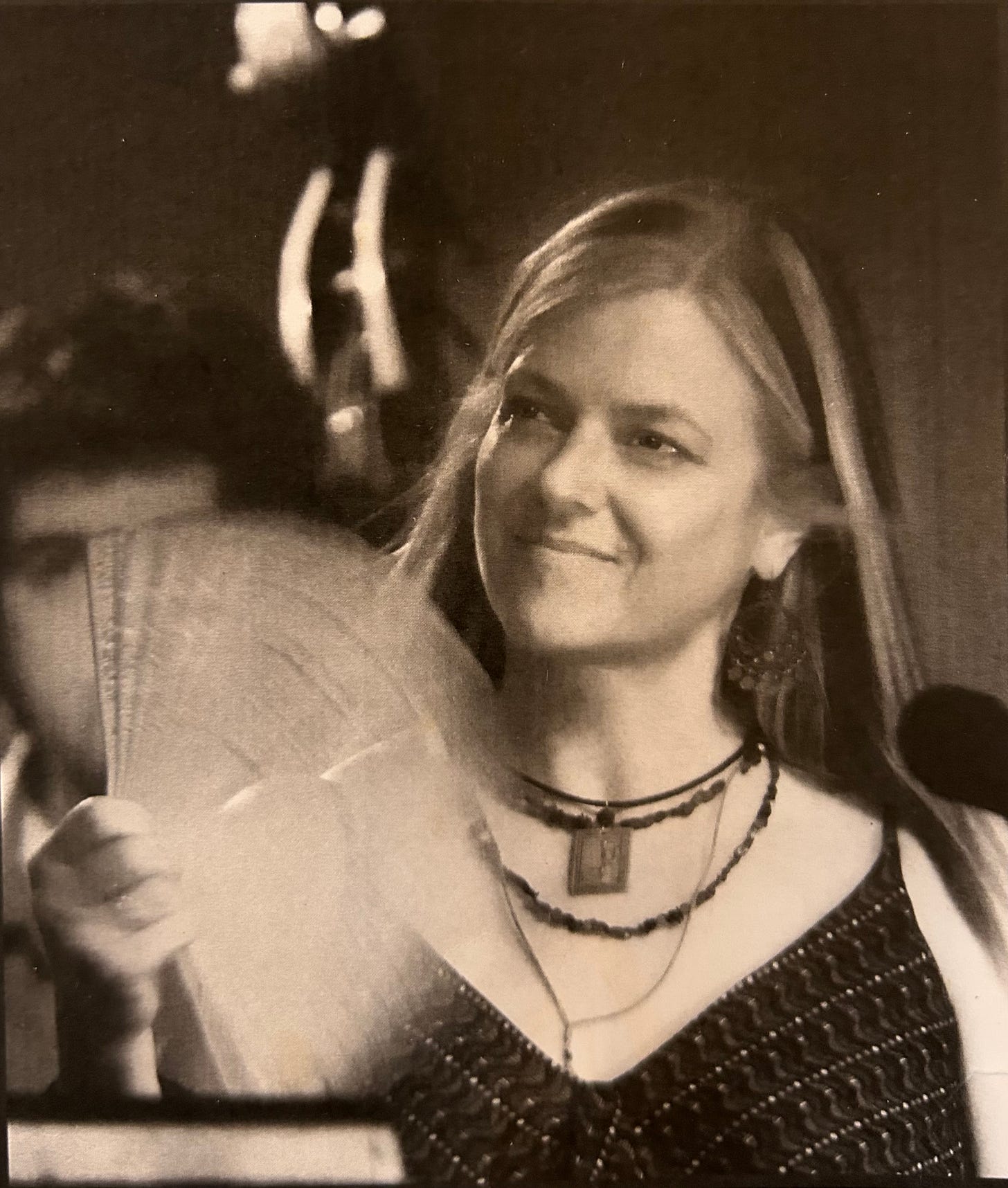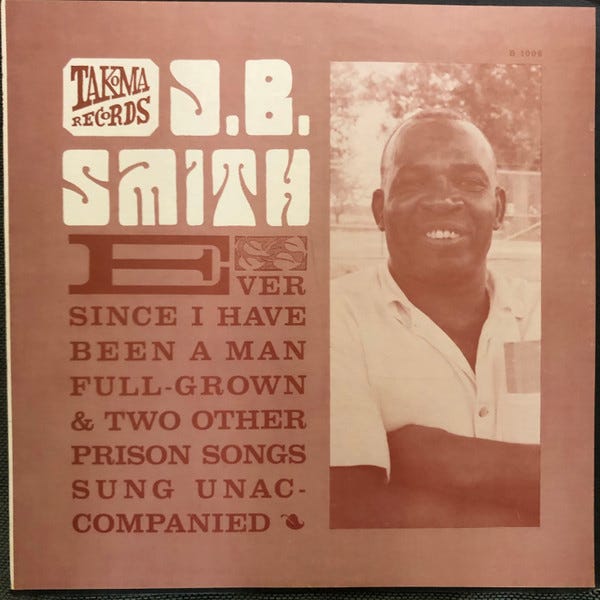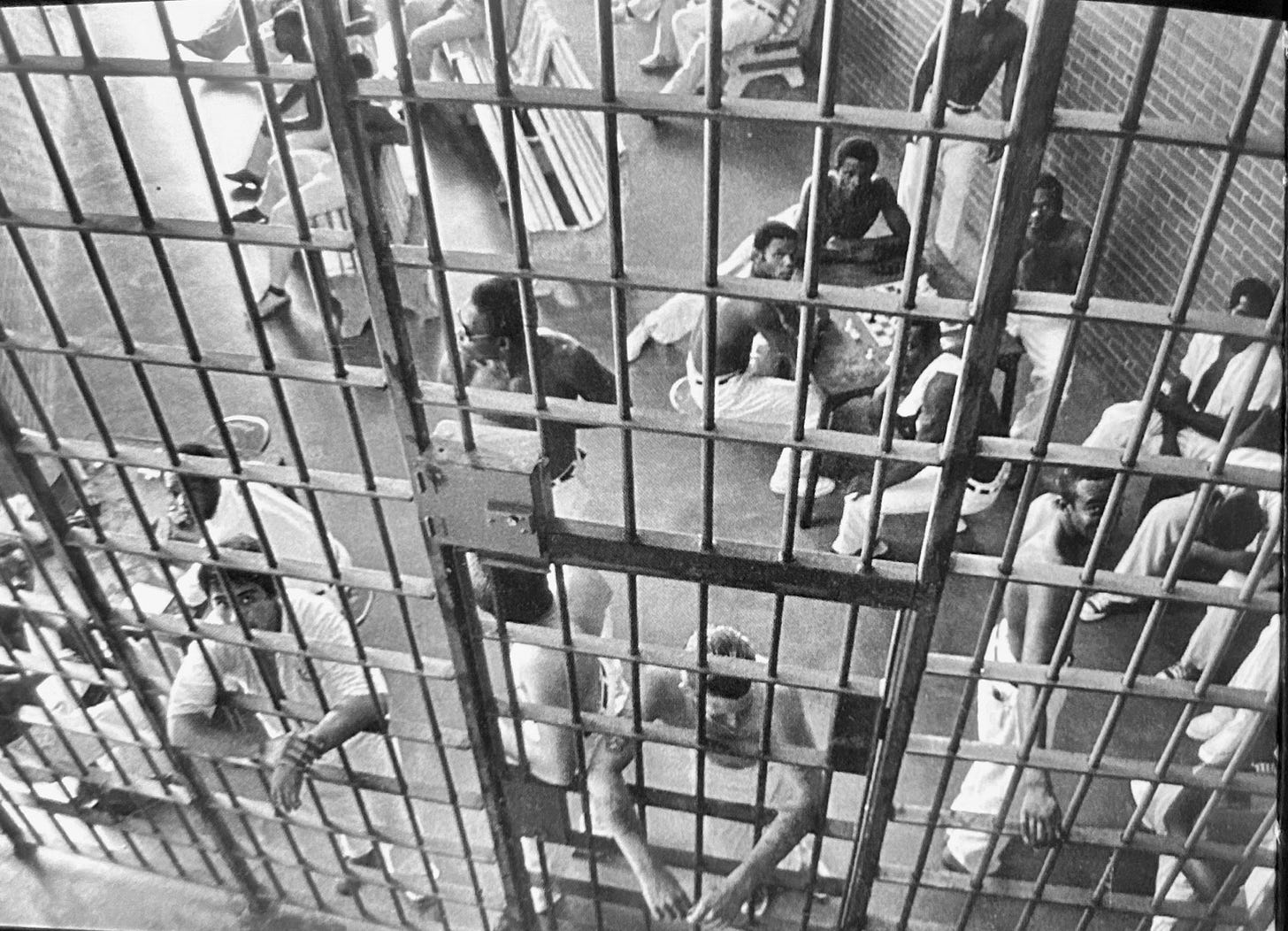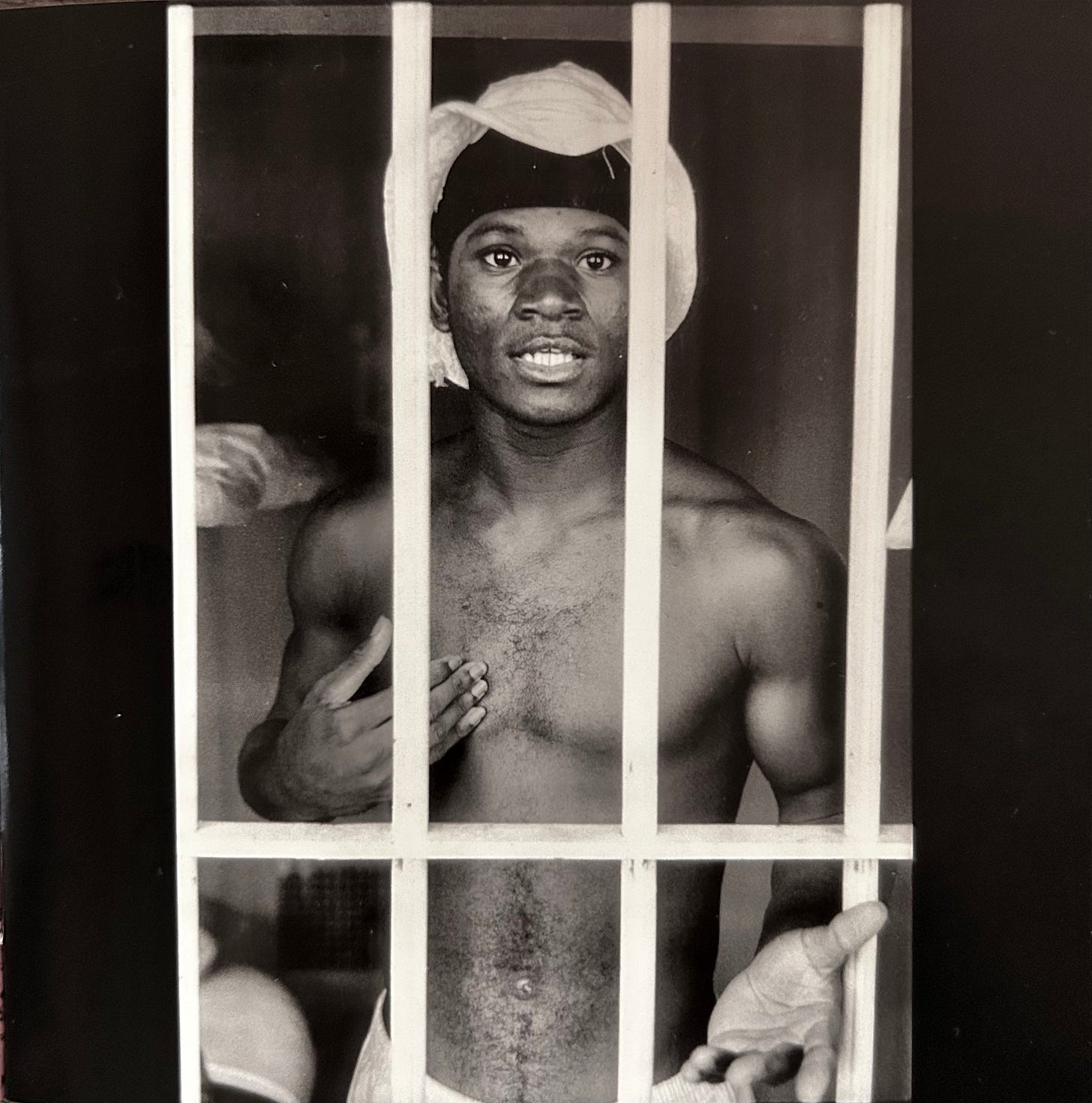Tina Marsh, Part 3
Here in the breaking at the brink of hope...
Vanish, o night!
Set, stars! Set, stars!
At dawn, I will win!
I will win!
I will win!
-from Nessun Dorma by Giacomo Puccini
In March of this year, I visited Austin, Texas, during a journey I wrote about here:
It was during Austin’s South by Southwest (SXSW), an annual film, interactive media, and music festival.
Along with my nephew, his friend, and my cousin’s daughter, I went to see the Alex Coke & Carl Michel Sextet playing at Captain Quack’s. It was an amazing evening, where I met Alex Coke for the first time after having communicated with him via email for many months. At the show, I also met Tina Marsh’s son Zeke Zimmerman, who just happened to know my cousin’s daughter from an Austin dance school where they both taught. It is a small world.
Here’s the Alex Coke & Carl Michel Sextet’s latest CD, Situation. It was recorded in April and May 2024 and released in 2024 on Michel’s Play On Records.
From this album, here is Sketchy, a composition by Alex Coke:
There are many great compositions and arrangements on this album, like Ottorino Respighi’s Pines of Rome and Wayne Shorter’s Miyako, which feature Bob Haffner’s cool pedal steel guitar. I love the ethereal sounds that come from the unique instrumentation of this sextet, with pedal steel guitar, Elaine Barber’s harp, and Carolyn Trowbridge’s vibes.
The album also includes two songs, Suikinkutsu 2 and Suikinkutsu 3, co-written with Coke by author, musician, jazz trombonist, filmmaker, and Steven Feld, the Distinguished Professor of Anthropology and Music at the University of New Mexico. As you may recall, Feld played trombone on the Lead Belly Legacy Band’s 1987 recording Out On The Western Plains, which was featured in Part 1 of this three-part series dedicated to Tina Marsh and the Creative Opportunity Orchestra (CO2). Here also is Part 2.
In 2002, Feld also founded the VoxLox label, self-proclaimed as "documentary sound art advocates for human rights and acoustic ecology.”
In 2005, VoxLox released Alex Coke’s Wake Up Dead Man / Iraqnophobia, which features Tina Marsh and the CO2.
In March 1986, the CO2 played a concert of “Barrier Free Music” that included a Coke’s three-movement suite, Wake Up Dead Man. The movements were titled Sundown Man, Running Time, and Danger Line. All interpretations of work songs taken from expressions in J. B. Smith’s album Ever Since I Have Been A Man Full Grown, released by Takoma Records in 1966:
For example, Sundown Man, the fourth song on side one of Smith’s album, is based on a different interpretation of time. With no labor laws and no overtime, prisoners worked until sundown. Coke took the title of the suite, Wake Up Dead Man, from Bruce Jackson’s 1972 book Wake Up Dead Man: Afro-American work songs from Texas prisons.
In 1964, during a trip through the Texas state prison system to document older, black prisoners who still knew prison work songs, the ethnomusicologist Bruce Jackson met Johnnie B. Smith. He taped Smith’s renditions of a handful of standards: Drop ’Em Down Together, Sure Make a Man Feel Bad, and Poor Boy. But Jackson soon learned that Smith also sang songs of his own writing, stranger and more private than the ones he’d heard passed down. Jackson’s book is one of the only extensive sources of information about Smith’s life and music.
Years later, for the 2005 release, Coke expanded Wake Up Dead Man to six movements. Although the suite only takes up less than 15 minutes of the CD, these six songs are stunning and well-conceived. In particular, I like the clanging steel sounds reminiscent of hammers on railroad ties at the beginning and end of the suite, which tie it all together.
The CD also includes photographs from Alan Pogue’s exhibit, 1985 Texas Prison System - A Photographic Survey, which premiered at the Capitol Rotunda in the Texas State Capitol Building in Austin. In the liner notes, Coke included this statement, which I think is relevant to share here in full:
The following book excerpt is to be read preceding the musical performance:
The turn rows, the roads forming the perimeter of the agricultural cuts in the rich bottom land, were where the men who collapsed or died were thrown in the days when neither happening was particularly rare, and the bodies were left there in full sight of the men working, under the hot sun until something came along to carry them away. The men still working in the fields could look and see the bodies there, and know they’d better not run, they’d better not collapse, no matter how thickly laced the weed growth. They knew, too, that there was no help. So the irony of “say get up dead man, help me carry my row…” was obvious: no one, no one at all, could offer any help at all, and there was nothing to do but push on and think about how many more years of the same work remained, to feel the sun beating down and indulge in the absurd wish that perhaps tomorrow the sun, Hannah, would just remain whenever it was when it was not broiling the convicts working in the endless fields.
Coke’s Wake Up Dead Man is a real tribute to these inmates and what they endured, and Pogue’s photographs further drive that message home. Here are a few of the poignant photographs included in the CD booklet:
Down through the Bars, 1984. Texas prison:
Pleading His Case, 1984. Texas prison:
…and this chilling photograph, The Death Chamber, 1997. Huntsville, Texas:
Alan Pogue is a fifth-generation Texan, born in Corpus Christi in 1946. He has lived in Austin since he returned from his tour of duty as a battlefield medic in Vietnam in 1968. Pogue recalls:
After returning from Vietnam in 1968 I was jailed three times for anti-war activities. Once arrested I learned that one is guilty until proven innocent. I also learned that a poor person has very little chance against the arbitrary power of the state. In 1972 I began photographing prison conditions for the Austin Prison Coalition. Through the leadership of Charlie and Pauline Sullivan, this and other Texas prison reform groups were organized under the name of C.U.R.E. (Citizens United for the Rehabilitation of Errants).
From the late 1960s, Pogue took his camera from counterculture gatherings in Austin to farmworker marches, U.S.-Mexico border colonias, and Texas prisons, all the way to Iraq and the West Bank. He has used photography to look into society's wounds, searching for the possibility of cultural healing.
The second part of Coke’s CD is Iraqnophobia. According to Coke, who spent a considerable time touring and recording in the Dutch Willem Breuker Kollektief:
[Iraqnophobia] is through composed. It’s one long piece and almost everyone gets a solo, rather than different tunes with several soloists on each. Willem, like Duke Ellington, is fond of writing for individual players.
He also explains the nature of the title:
It’s a weird title. It sounds political. A good piece of music should evoke different feelings in different people. I didn’t want it to have a political agenda as much as I wanted to raise the question and make people think.
From the CD, here is the first track, Shifting Sands. Interestingly, Coke included with each musician’s score a photo of a sand dune:
Once again, Coke features Pogue’s photographs to drive home his message. Pogue had been in Iraq several times since the Gulf War. Here are a couple of his photos from that time:
Iraqi girl gives back part of a cruise missile, 1998, Al Dur, Iraq:
…and Sad woman of Basrah, 1998, Basra, Iraq:
Wake Up Dead Man / Iraqnophobia is beautifully conceived art. Steven Feld perfectly sums up how I feel about this work, calling it a deep meditation on human rights, peace, and social justice. The music, along with Alan Pogue’s photographs, directly confronts the brutal circumstances of life in prison and war zones. He adds that they make us ask questions about the pain and misery of these places, and in doing so, they advocate for compassion and human dignity.
In 2006, Tina Marsh recorded what I consider her best solo album, Inside the Breaking. This is a masterpiece. About the session, Marsh wrote:
These are songs that I’m often requested to sing. They are gorgeous melodies and stories in and of themselves, so our approach is purposefully sparse - giving them lots of space to breathe. This collection has a long, slow arc through an unlikely combination of songs. There is wistful sadness, underscored by the elegant simplicity of Eddy’s arrangements and piano as well as Terry’s cello.
The album includes Marsh’s interpretation of Ornette Coleman’s Lonely Woman, singing the most prominent and widely recorded lyrics for Coleman’s song, written by Margo Guryan.
While at Boston University, Guryan was a student of Margaret Chaloff, the mother of Serge Chaloff. Already at 19 years old, she had signed with Atlantic Records.
Guryan talks about how, in 1959, while at the Lenox School of Jazz in Massachusetts, it came about that she wrote those lyrics:
After I met Gunther Schuller and John Lewis in the summer of 1959, they gave me Lonely Woman and asked if I could write words for it. The outside verses were easy, as there was a set melody and rhythm. The bridge was more difficult, because Ornette improvised…never played the bridge the same way twice. So I used the record they gave me as a guide. I took snips of melody from Ornette’s improvisation and fashioned them into a bridge. I didn’t want it to sound as though two people had written this portion of the song.
Over the years, Guryan’s lyrics have been recorded by multiple artists; however, the first and perhaps best version is by Chris Connor on her 1962 album Free Spirits, released by Atlantic Records:
Tina Marsh’s version is equally stunning, using a marvelous trio format with Eddy Hobizal on piano and Terry Muir on cello:
My favorite song on this CD is Where or When, the wonderful Rodgers and Hart classic, probably made most famous by Paul Gonsalves on Duke Ellington’s 1958 album Ellington Indigos.
Here’s Tina Marsh’s version:
Inside the Breaking was the last CreOp release. In the CD’s liner notes, Marsh wrote:
In this collection, the first in a series, we give you a morsel of lingering bitter sweetness from where we sometimes find ourselves - here in the breaking at the brink of hope.
She unfortunately never got the chance to build on this beginning. On June 16, 2009, Tina Marsh passed away. But we will always have this treasure to remember her by.
Having been originally diagnosed and treated in 1994, in February 2008, Tina Marsh learned that cancer had returned, and though she continued to record and perform, she died at home. She was 55 years old. During the last days of Tina’s life, her younger sister shared,
She pushed the envelope, pushed us all to see the beauty around us, to experience the moment in a way that is deep and knowing and peaceful… It was like her constant prayer or chant or meditation. But beyond that, she had the genius and capacity to carry an audience with her.
You only need to take the time to discover the body of work she left behind to understand how true that is.
Here’s one more for the road. Alex Coke’s latest collaboration is with the artist Christopher Hynes on an amazing collection of music and visual art, Dreaming Hildegard. Here are the three movements performed by the MAE trio with Alex on flutes, Elaine Barber on harp, and Masumi Jones on drums:
11th-century female mystic and visionary Hildegard of Bingen inspires this spiritual and meditative experience. It was released in 2024 in a beautifully handmade portfolio that includes the CD, artists’ notes, and images of the nine paintings inspired by the compositions. This is an extraordinary collaboration - buy it!
In 1988, Tina Marsh explained that the primary intention of the Creative Opportunity Orchestra was to develop an environment and a language for actual collaboration among dedicated and skilled musicians in creating music that is mostly new and mostly jazz.
For nearly three decades, she pursued that goal with extraordinary dedication and passion, serving as the director, bandleader, and patron saint of the Creative Opportunity Orchestra, which developed into a consistently innovative experimental jazz ensemble of more than 200 musicians.
Tina Marsh was the axis around which CO2 revolved. The final CO2 release in her lifetime was called It’s Possible. With her leadership, CO2 was possible. But it wasn’t easy. What kept her going? In her words:
A certain kind of faith down deep that everything is gonna be all right, as long as I try to keep close to myself and see what the truth is inside myself.
Those are wise words for all of us.
The afternoon after we saw the Alex Coke & Carl Michel Sextet perform in Austin, Alex, his agent Nicki Cutean, harpist Elaine Barber, Tina’s son Zeke, and I sat down together at Alex’s home. I was deeply touched, as they graciously shared their stories and memories of Tina Marsh. Over these three parts, I have covered just a fraction of her story and tried to capture some of the love from that afternoon. It has been my honor to share with you the heart and soul, and enduring spirit of Tina Marsh.
In the end, what I think she was all about was reminding us not to bring each other down, but to elevate our imaginations about what things can be. She was a beacon of hope, and her light continues to shine.
Next week on that Big River called Jazz, we’ll dig our paddles into the world of Mats Gustafsson.
Please hit this link to buy me a cup of coffee if you’d like to show your guide some appreciation for this and past journeys. Know in advance that I thank you for your kindness and support.
If you like what you’ve been reading and hearing so far on our journey and would like to share this with someone you think might be interested in learning more about our great American art form, Jazz, just hit the “Share” button.
From Astaire to Sun Ra: A Jazz Journey is a reader-supported publication. To subscribe, please hit the “Subscribe now” button.
Feel free to contact me at any time to talk shop. I welcome and encourage that.
Until then, keep on walking….









